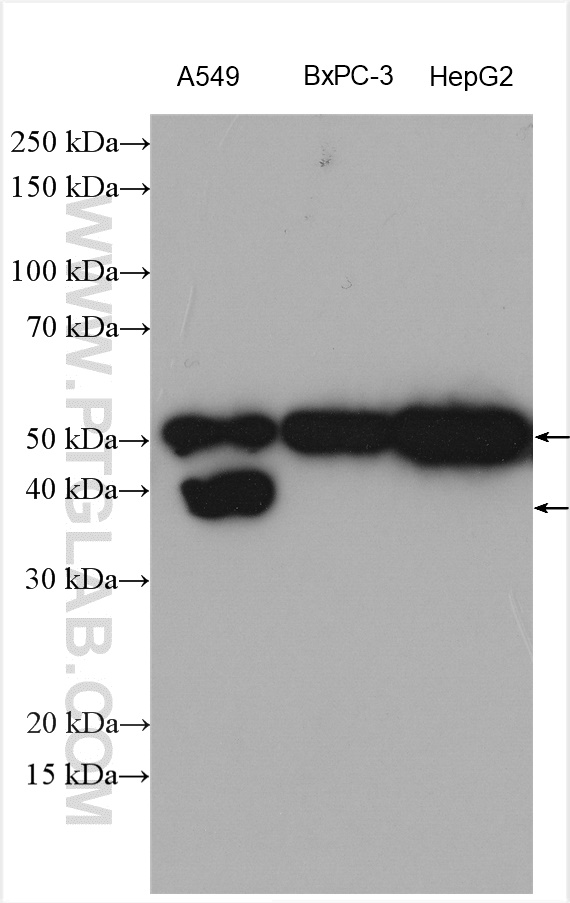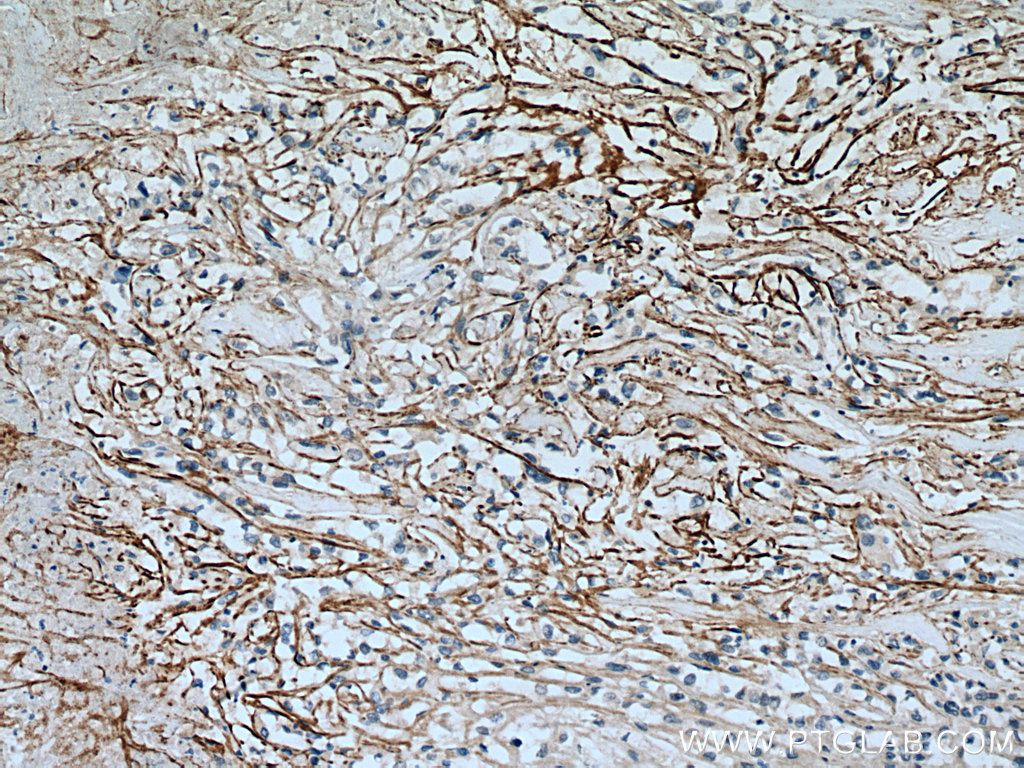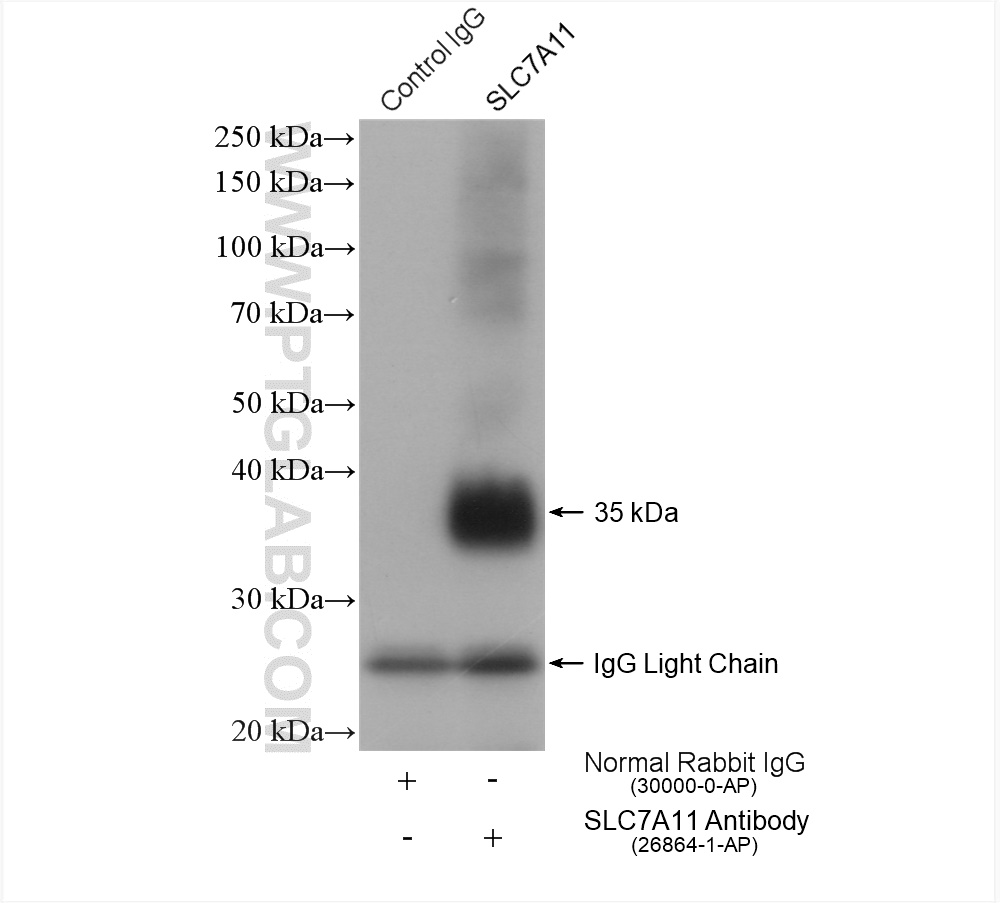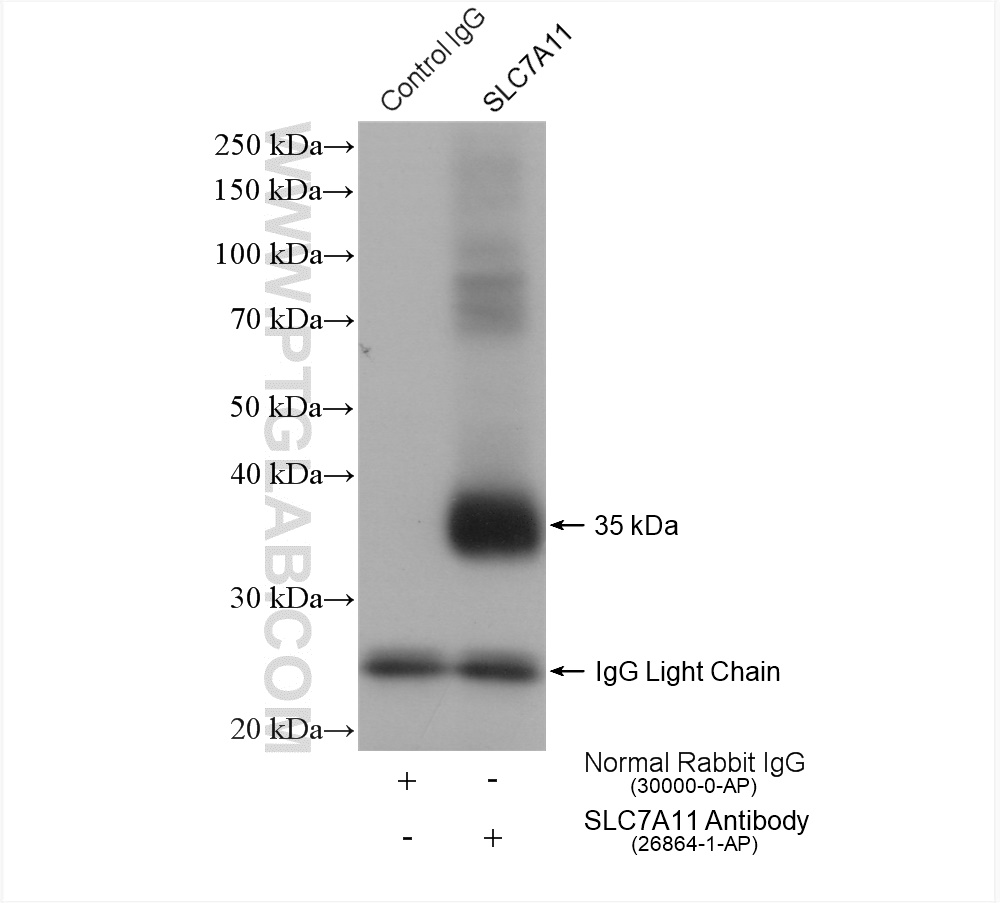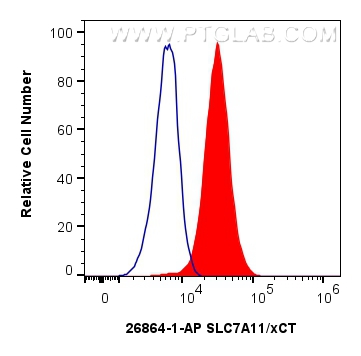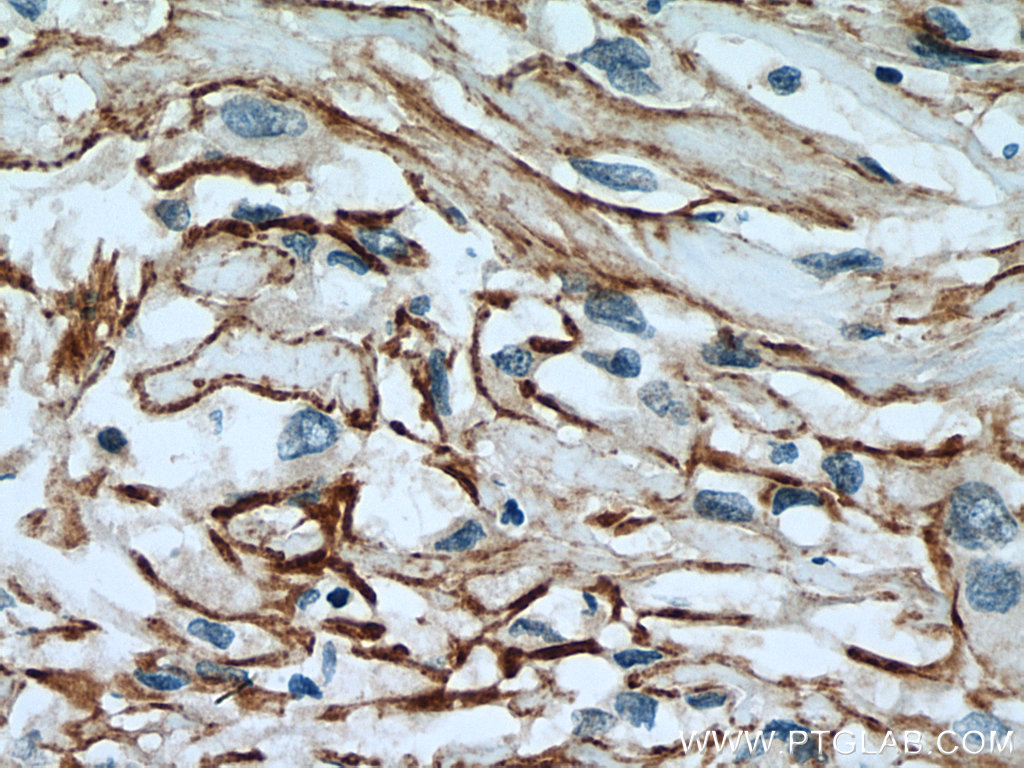- Featured Product
- KD/KO Validated
SLC7A11/xCT Polyclonal antibody
SLC7A11/xCT Polyclonal Antibody for FC, IHC, IP, WB, ELISA
Host / Isotype
Rabbit / IgG
Reactivity
human and More (2)
Applications
FC, IHC, IP, WB, ELISA and More (3)
Conjugate
Unconjugated
257
验证数据展示
经过测试的应用
| Positive WB detected in | A549 cells, U2OS cells, BxPC-3 cells, HepG2 cells |
| Positive IP detected in | A549 cells, HepG2 cells |
| Positive IHC detected in | human renal cell carcinoma tissue Note: suggested antigen retrieval with TE buffer pH 9.0; (*) Alternatively, antigen retrieval may be performed with citrate buffer pH 6.0 |
| Positive FC detected in | HepG2 cells |
推荐稀释比
| Application | Dilution |
|---|---|
| Western Blot (WB) | WB : 1:500-1:2000 |
| Immunoprecipitation (IP) | IP : 0.5-4.0 ug for 1.0-3.0 mg of total protein lysate |
| Immunohistochemistry (IHC) | IHC : 1:50-1:500 |
| Flow Cytometry (FC) | FC : 0.80 ug per 10^6 cells in a 100 µl suspension |
| It is recommended that this reagent should be titrated in each testing system to obtain optimal results. | |
| Sample-dependent, Check data in validation data gallery. | |
产品信息
26864-1-AP targets SLC7A11/xCT in WB,IP,IHC,FC,ELISA applications and shows reactivity with human samples.
| Tested Applications | FC, IHC, IP, WB, ELISA |
| Cited Applications | WB,RIP,IP,IHC,IF,FC,CoIP |
| Tested Reactivity | human |
| Cited Reactivity | human, goat, chicken |
| Immunogen | SLC7A11/xCT fusion protein Ag25431 种属同源性预测 |
| Host / Isotype | Rabbit / IgG |
| Class | Polyclonal |
| Type | Antibody |
| Full Name | solute carrier family 7, (cationic amino acid transporter, y+ system) member 11 |
| Synonyms | Amino acid transport system xc, CCBR1, Cystine/glutamate transporter, SLC7A11, SLC7A11/xCT, xCT |
| Calculated Molecular Weight | 55 kDa |
| Observed Molecular Weight | 55 kDa, 35-40 kDa |
| GenBank Accession Number | BC012087 |
| Gene Symbol | SLC7A11 |
| Gene ID (NCBI) | 23657 |
| RRID | AB_2880661 |
| Conjugate | Unconjugated |
| Form | Liquid |
| Purification Method | Antigen affinity purification |
| UNIPROT ID | Q9UPY5 |
| Storage Buffer | PBS with 0.02% sodium azide and 50% glycerol pH 7.3. |
| Storage Conditions | Store at -20°C. Stable for one year after shipment. Aliquoting is unnecessary for -20oC storage. |
背景介绍
实验方案
| Product Specific Protocols | |
|---|---|
| WB protocol for SLC7A11/xCT antibody 26864-1-AP | Download protocol |
| IHC protocol for SLC7A11/xCT antibody 26864-1-AP | Download protocol |
| IP protocol for SLC7A11/xCT antibody 26864-1-AP | Download protocol |
| Standard Protocols | |
|---|---|
| Click here to view our Standard Protocols |
发表文章
| Species | Application | Title |
|---|---|---|
Cell Res Mitochondria-localized cGAS suppresses ferroptosis to promote cancer progression | ||
Cell Host Microbe Liberation of daidzein by gut microbial β-galactosidase suppresses acetaminophen-induced hepatotoxicity in mice | ||
Drug Resist Updat Upregulation of CoQ shifts ferroptosis dependence from GPX4 to FSP1 in acquired radioresistance | ||
Nat Immunol Glutathione peroxidase 4-regulated neutrophil ferroptosis induces systemic autoimmunity. | ||
ACS Nano Engineering MMP-2 Activated Nanoparticles Carrying B7-H3 Bispecific Antibodies for Ferroptosis-Enhanced Glioblastoma Immunotherapy | ||
Nat Commun URI alleviates tyrosine kinase inhibitors-induced ferroptosis by reprogramming lipid metabolism in p53 wild-type liver cancers |
